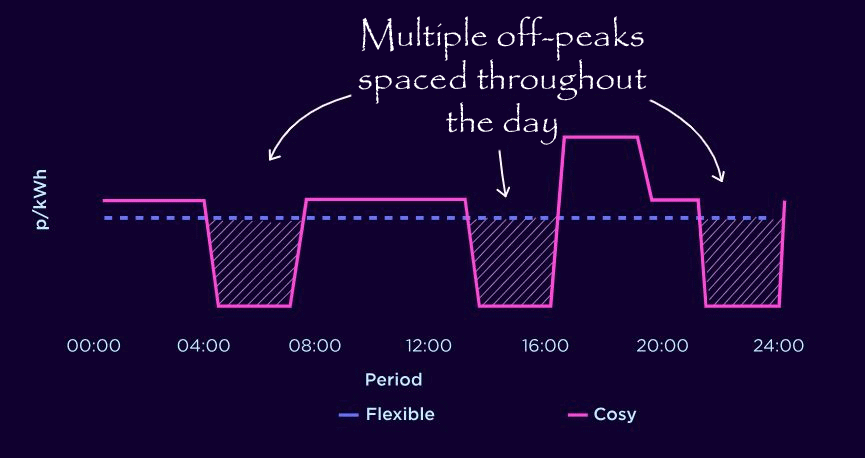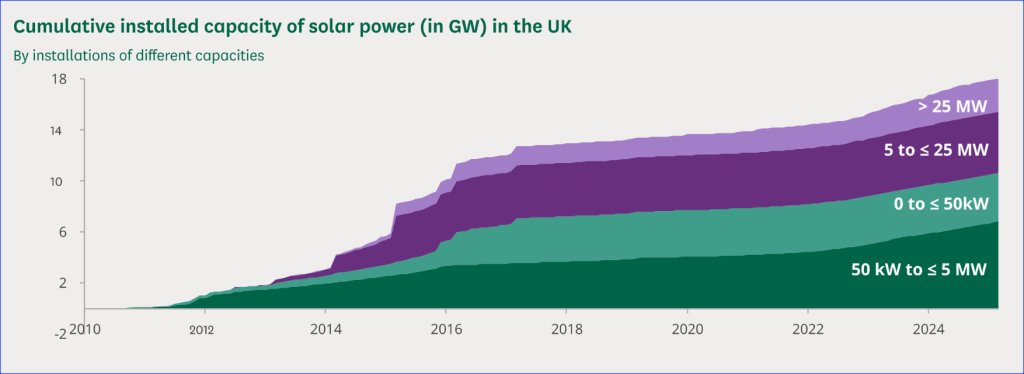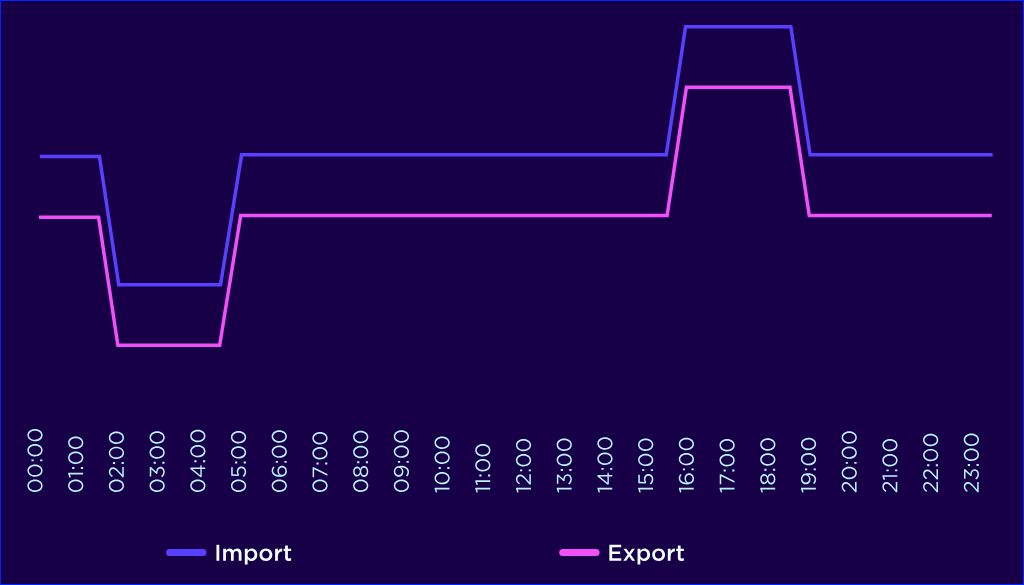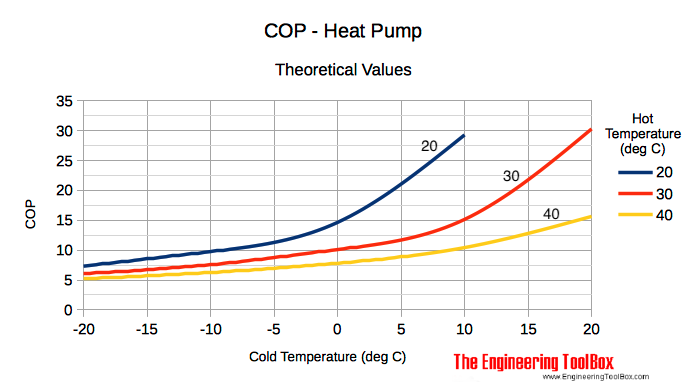Heat pumps in winter
Heat pumps are most efficient when they heat radiators to just above room temperature. This requires them to run almost continuously with result that most electricity consumption is during standard or peak times.
While storage batteries give access to off-peak electricity, conventional tariffs with a single early morning slot are not ideal because the duration to the next slot is too long. A heat pump for a 4 to 5 bedroom running on a cold day consumes about 2kW – 4kW, and would drain a decent sized 13.5kWh battery by midday. Tariffs with multiple off-peak slots per day are prefered because they shorten the discharge periods.

Solar pv
Conversely in spring and summer, houses with solar pv and batteries prefer high export rates.
With the steady growth in solar generation capacity there is an over supply of electricity.

An oversupply is developing in the middle of the day which drives down export prices, but which peak in the evening as the sun goes down: the so called “duck curve“.
Octopus Energy’s Flux export tariff, for example, currently pays 29p/kWh between 4 and 7pm in our area: compared to only 10p/kWh or less at other times.

The result is that the economic benefit of solar generation is progressively reducing unless one can either use it or store it for use export later in the day.
Avoid generalisations
Being on the wrong tariff can result in significant and unnecesary penalties – but do not rely on bloggers or suppliers’ marketing to tell you what tariff is best for you. No two homes are alike. Seasons and local weather complicate things further, especially if you have a heat pump or solar pv.
In particular, “heat pump” tariffs do not automatically make sense for homes with heat pumps. In our our case, we are about £1,400pa better off on Flux Import/Export compared to Cosy: this is because we have a comparatively large 40x panel solar pv array.
Switching tariffs during the year fine tunes things further: in our case, being on Cosy during the very coldest and darkest months of December and January, reduces electricity costs further by approximately £200pa.
Simulate to accumulate
While being on the optimum electricity tariff can result in big savings, finding it is not easy.
Many home owners are guided by the data from their home energy dashboards, using daily costs before and after switches to confirm their decisions. This is an unreliable because many things like weather, seasonal changes and consumption patterns changes can mislead interpretation of the results.
A better approach is to simulate tariff options to find the best for your case. To do this, put the tariff possibilities into “energy” tag, set “max_project_duration_years” to 1 year and pick the tariff whose simulation gives the best NPV.
Nevertheless, there is a limit to how accurate simulators can be. By contrast, home energy controllers measure real data in real time and so, for this reason, I wrote tariff selection into our battery controller. It reviews the tariffs daily and e-mails us when something better is found.
Some energy providers discourage frequent tariff changes: so choose your supplier and switches accordingly.
